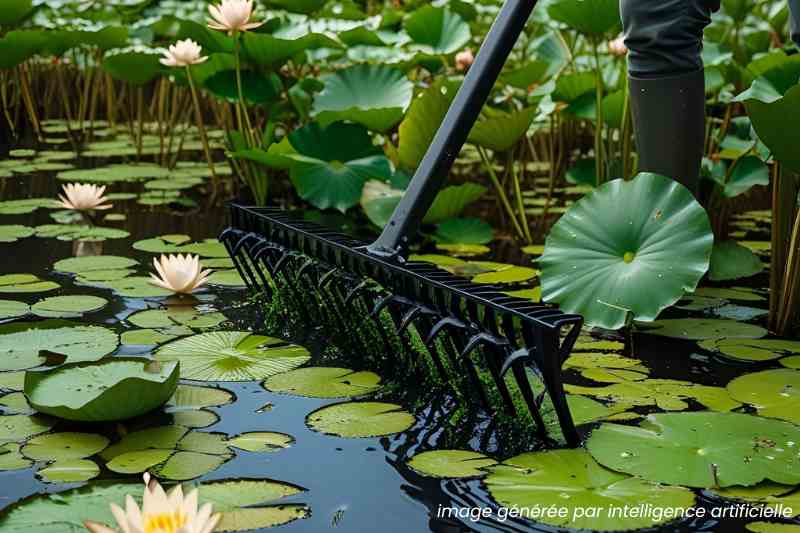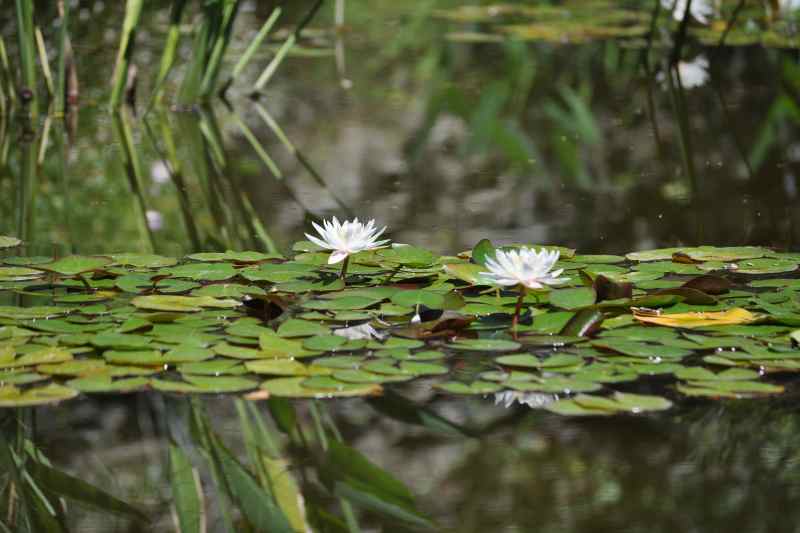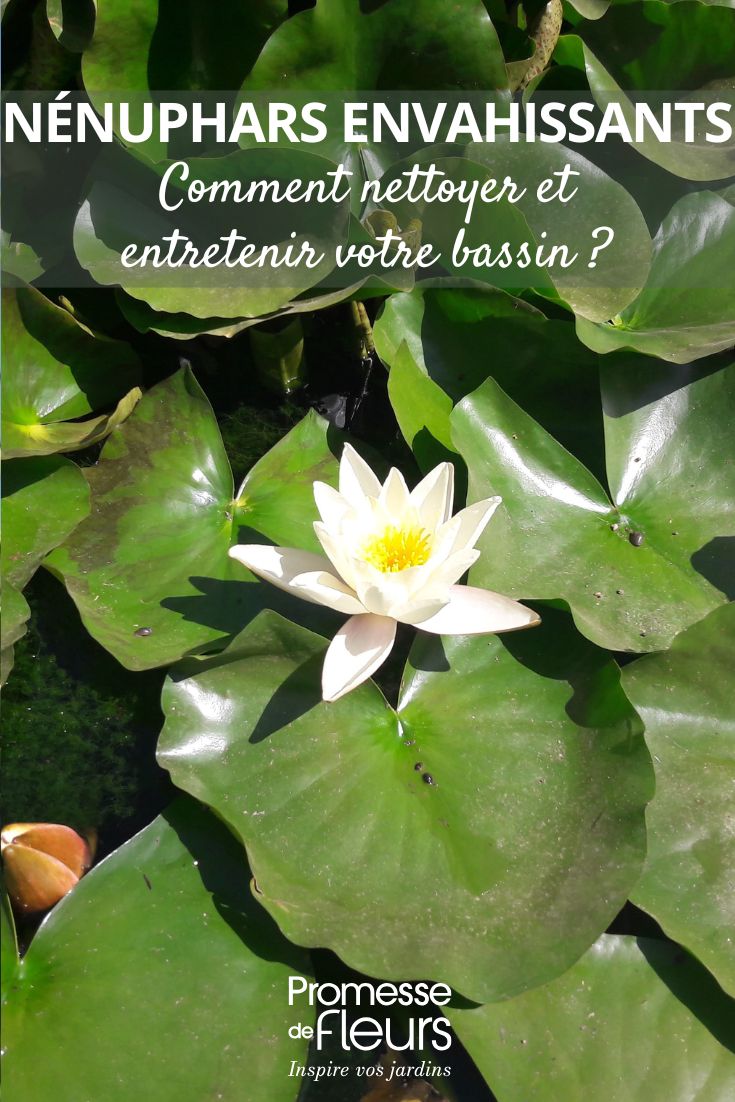Masses of water lilies on a pond, without pretending to be Monet in Giverny, we love it! But when they become overabundant, colonising to the point of preventing other plants from settling, it becomes truly problematic and does not match the vision we had dreamed of...
Quickly covering the entire surface of the water, it is essential to manage this expansion of the water lily, detrimental to the health of the pond.
How can we explain the invasion of a pond by water lilies and how can we intervene without disturbing the aquatic fauna? We will tell you everything!

How can we explain the invasion of a pond by water lilies?
The water lily or nymphaea is naturally exuberant. However, certain growing conditions favour its proliferation. Some types of water lilies are particularly problematic in their ability to cover the entire surface of the water in record time. When these various conditions are met, we end up with a pond covered by more than two-thirds of foliage, which is the limit of obscuration on any body of water to avoid disturbing the ecosystem.
- Shallow water: water lilies prefer shallow, warmer waters. The shallower the pond (15-40 cm), the easier they root and spread quickly;
- Poorly managed fertilisation can exacerbate the problem. Water lilies are nutrient-hungry, but it is important to balance their fertiliser inputs. Avoid overdosing, especially in spring, by following specific recommendations for aquatic plants;
- Too muddy bottoms greatly favour the growth of water lilies. The rhizomes establish themselves firmly and multiply excessively;
- Lack of plant diversity: the absence of competing aquatic plants, such as marsh iris, elodea, or sagittaria, promotes the proliferation of water lilies by increasing the risk of a single species taking over;
- Absence of natural predators: in some environments, the lack of predators allows water lilies to dominate and completely cover the surface of the water. It is therefore important to manage the biodiversity of the ecosystem around the water body;
- Invasive species of water lilies such as the yellow water lily (see below).

Are all water lilies invasive?
Fortunately not! But some become problematic due to their rapid growth and propagation that can become uncontrollable. Among the species and varieties that develop on a large scale, we particularly note the Nuphar lutea or yellow water lily, well known for its aggressive growth over large areas and its ability to dominate water bodies, making it a difficult species to control.
Other water lilies naturally produce many leaves, which can be beneficial for the biological balance of a pond, but also potentially invasive if not controlled. Among them is the Nymphaea 'Mayla', which primarily produces leaves and few flowers, or the Nymphaea 'Gonnere'.
How to manage an overpopulation of water lilies?
An overpopulation of water lilies prevents light from penetrating, hinders the oxygenation of the environment, and disrupts the entire pond.
Several steps can effectively control water lilies in a pond. Regularly cutting or uprooting water lily rhizomes at their base is the most commonly used technique to clean the pond. It proves effective and allows for better control of their spread. Intervention is generally carried out at the end of summer or the beginning of autumn, after their active growth cycle. Acting at this time prepares the pond for winter and avoids disturbing the flowering period in spring and early summer.
- Before you begin
- Ensure you have all the necessary tools and gear: gardening gloves, baskets or nets to collect debris, pruning shears or a sharp, disinfected knife to cut the rhizomes, a net to remove leaves from the water's surface, and boots or waders to protect yourself while working in the water;
- Initial cleaning
- Start by removing dead leaves and floating debris from the water's surface using a net. This will facilitate access to the rhizomes and make the work easier.
- Removal of water lily rhizomes
- For small ponds, manually remove water lilies by gently pulling on the rhizomes to extract them from the water. The idea is to remove as much plant material as possible in one go to avoid rapid regrowth.
- For large ponds or lakes, use an aquatic rake or similar tool to reach and lift the rhizomes from the bottom of the water. Work in sections to avoid disturbing the ecosystem.
- Pruning and dividing rhizomes:
- Once the rhizomes are removed from the water, cut them into sections with pruning shears, leaving a part of about 25 cm with the tip for replanting if you wish to keep some water lilies. Replant them in special baskets to limit their future expansion.
- Disposal of debris
- Collect all plant debris and dispose of it in a composter. Do not leave it on the edges of the pond, as it could return to the water and contribute to siltation.
Important: in the case of uncontrolled invasion over large areas such as lakes, it will be necessary to call in a harvesting company. They have amphibious machines that scrape the bottom. This dredging should also be considered in the case of ponds or lakes where siltation has become problematic.

Water Lilies: the 3 rules for a well-maintained pond
As a reminder, before allowing yourself to be completely overrun:
- All floating plants should occupy a maximum of 2/3 of the surface. As soon as they reach half of the water's surface or more, it is time to consider intervention;
- Regular maintenance of water lily populations also prevents aggressive expansion: division should be undertaken every two to three years, in April. Read our article on Dividing Water Lilies. Regular maintenance is essential to avoid a new invasion and to maintain a healthy environment for aquatic fauna and flora.
- Systematically cut decaying leaves: in spring, remove any dead leaves that may have remained since autumn, and in autumn, remove all yellowing leaves to prevent them from decaying, which would accelerate the siltation of the pond and produce too much organic matter. Finally, trim some surface leaves as soon as the foliage becomes too abundant in summer.
- To avoid being overwhelmed, be vigilant from the moment of planting: plant your water lilies in special planting baskets, open or closed (without perforated holes), to prevent them from spreading.

































Comments